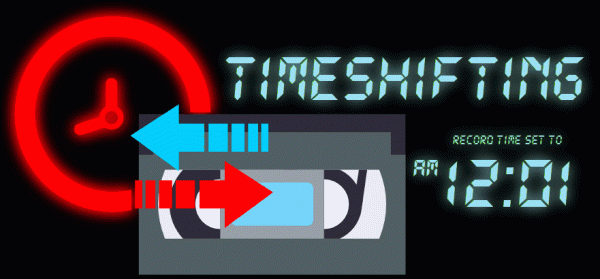Do you remember hearing the joke about those technically challenged people who owned a VCR that had a clock that always blinked 12:00? For those of you who only know the world with modern day DVRs and on-demand video streaming services, you may not understand why TVs, VCRs, or Betamax machines all needed to have their own clocks. But, they were a crucial part of these devices, if you wanted to be able to watch a movie or television show “on demand”. You see, back then, this was referred to as “time shifting”.
Back in the 80s, if you didn’t have a VCR (or Betamax machine), you pretty much had to watch your favorite T.V. shows and movies (on cable/satellite services) when they were broadcast by the provider. However, if you were fortunate enough to own a video recorder, you could make use of the built-in clock to program the VCR to start recording at a particular time of day.
In the beginning, the recording function was pretty basic. First, you had to make sure your VCR’s clock was set to the proper time. If the power went out, or if you unplugged the VCR, the clock would have to be reset to the correct time. Next, your cable/satellite box had to be powered on and set to the proper channel. If you used the built-in T.V. tuner of your VCR to watch television, then it had to be set to the proper channel to record the program of choice. Then, with a VHS tape queued up and ready to go, you switched your VCR to the timer function and waited. At the proper time, the VCR would then start recording.
As VCRs became more sophisticated, more elaborate functions were added, like being able to set up multiple recording times and duration, as well as being able to record from one channel or input source and watch another on the T.V. at the same time. (The movie City Slickers had a funny scene about this sort of thing)
Timeshifting was probably the most compelling reasons to own a VCR, and it created quite a stir within the entertainment industry. Of course, the film industry felt that recording broadcast programs and movies was an infringement on their copyright laws and tried to get the practice banned. However, the courts saw it differently and determined that the practice fell under the laws of “fair use”. Once this was determined, many cable movie providers jumped on the bandwagon and started marketing to the “time shifter” mentality. Some of them even went as far as broadcasting popular movies late at night, so customers could set their VCRs to record them while they slept.
Time shifting became so popular with VCR owners that, in the early 90’s a new technology was developed called, VCR Plus+ (in the UK I think it was called Video Plus+).
What this service provided was an easier way for VCR owners to record their programs. Rather than having to go through the process of programming their VCRs with channel number, start time and end time for their recording, TV listings (like the newspaper or T.V. Guide) would include a six digit code, which the customer would then program into their VCR. This code would contain all of the information the VCR needed to program its timer. It made the process of VCR programming much simpler for the end user.
These days, on-demand streaming services and DVRs have pretty much replaced the practice of time shifting. But, you know, these modern day conveniences have also taken away the thrill that I used to get during my time shifting hey-day. I miss that little feeling of excitement I used to get in the mornings, when I would get up to see if I was successful at recording that late-night flick I programmed in the night before. Did the movie start on time or did it get bumped by the broadcaster for some silly reason? Did I get the start time and channel settings right? Did I get the ending of the movie, or was my end time off? You just didn’t know until you rewound the tape and checked it out!
Man, those were good times and I miss them.
[tag]history[/tag]


